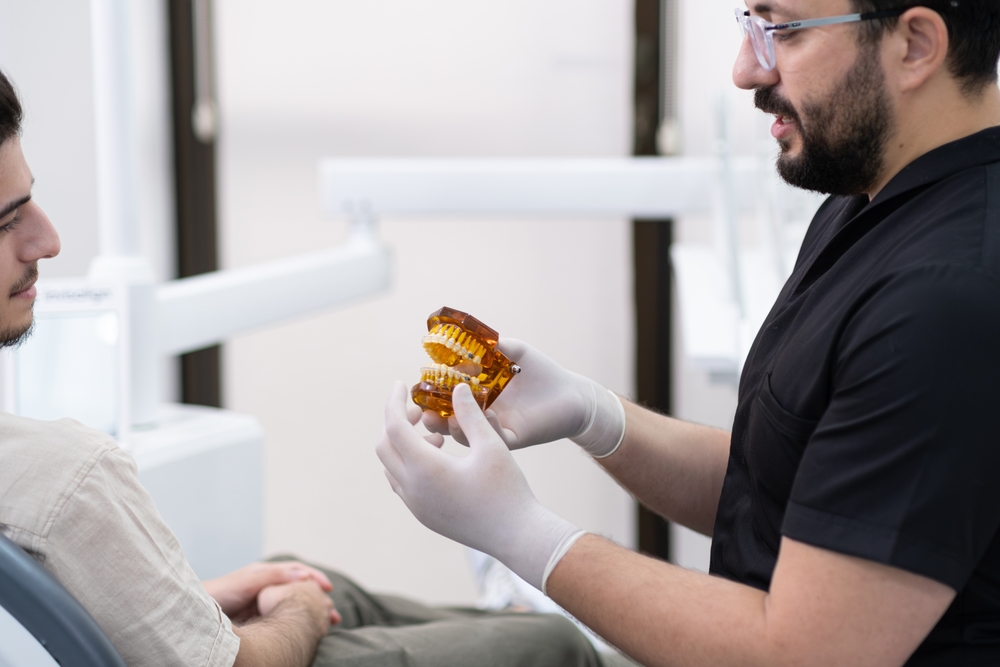Unveiling the Mysteries of TMJ: A Comprehensive Guide to Understanding and Treating Jaw Disorders
The temporomandibular joint (TMJ) is a complex structure that plays a crucial role in our everyday activities like talking, chewing, and yawning. This article will delve into the intricacies of the TMJ, exploring its functions, common causes of jaw pain, and how orthodontics can contribute to its health.
What is TMJ and How Does It Work?
The temporomandibular joint (TMJ) is a hinge-like joint that connects your jawbone to your skull. It allows smooth jaw movements, facilitating essential activities like talking and eating. The joint comprises muscles, ligaments, and a disc that acts as a cushion, ensuring the jaw moves seamlessly.
Common Causes of Jaw Pain and TMJ Disorders
Jaw pain can result from various factors, including stress, teeth grinding (bruxism), arthritis, or trauma. When these factors disrupt the balance of the TMJ, it can lead to Temporomandibular Joint Disorders (TMD). Identifying the root cause is crucial for effective treatment.
Orthodontic Issues and Their Impact on Jaw Health


Orthodontic problems related to the alignment of the jaw and teeth can contribute to the development and exacerbation of TMD. The intricate connection between orthodontic conditions, such as misaligned teeth and malocclusion, and the overall health of the TMJ underscores the importance of recognizing and addressing these issues proactively with orthodontic intervention.
Misaligned Teeth
Misaligned teeth represent a common orthodontic challenge that can significantly impact TMJ health. When teeth do not align correctly, the natural biomechanics of the jaw during chewing and speaking are compromised. This misalignment leads to uneven pressure distribution on the TMJ, subjecting the joint to excessive stress and strain. The consequences of such strain can manifest as discomfort, pain, and a range of TMJ-related symptoms.
Malocclusion
Malocclusion, another prevalent orthodontic concern, introduces complex challenges to the TMJ. This condition involves a misalignment of the upper and lower teeth when the jaw is closed, creating an irregular bite. The mismatched interaction between teeth and jaws in malocclusion forces the TMJ to adapt to unnatural movements, contributing to heightened tension within the joint. The prolonged exposure to abnormal forces increases the risk of TMJ disorders, amplifying the potential for discomfort and pain.
The interplay between orthodontic issues and TMJ disorders creates a domino effect on oral health. As misaligned teeth and malocclusion disrupt the harmonious functioning of the TMJ, the joint responds with inflammation and structural changes, further complicating the situation. The resulting discomfort and pain can extend beyond the jaw joint itself, affecting adjacent areas such as the head, neck, and ears.
How Orthodontics Can Help Relieve Jaw Pain


Orthodontic treatments can help individuals grapple with the TMJ challenges posed by misaligned teeth and malocclusion.
Braces
Among the diverse orthodontic interventions, braces are a popular treatment to improve jaw health, working diligently to correct the alignment of teeth and jaws. Through a carefully orchestrated process, braces apply gentle and consistent pressure on the teeth, guiding them into their desired positions over time. This gradual repositioning not only enhances the aesthetics of the smile but, more importantly, plays a pivotal role in optimizing bite alignment.
By addressing the root cause of misalignment, braces effectively alleviate the burden on the TMJ, promoting a harmonious relationship between the jaw joint and the surrounding structures. As the teeth align, the strain on the TMJ diminishes, leading to a reduction in pain and an improvement in overall jaw function.
Invisalign
Invisalign, an innovative alternative to traditional braces, offers a modern and discreet alternative to individuals seeking to correct their bite alignment and alleviate TMJ-related issues.
Invisalign utilizes a series of clear, removable aligners that gradually guide teeth into their proper positions. This revolutionary approach not only caters to aesthetic preferences by being virtually invisible but also underscores the commitment of orthodontics to patient comfort and convenience. Like traditional braces, Invisalign contributes to bite correction, reducing the strain on the TMJ and relieving associated discomfort.
Bite Splints and Other Orthodontic Interventions
Bite splints, also known as occlusal splints or night guards, are orthodontic devices that help alleviate TMJ symptoms. They are designed to minimize teeth grinding and provide support to the jaw joint, promoting relaxation of the TMJ muscles.
This adaptability in orthodontic solutions ensures that individuals can embark on a journey towards improved TMJ health tailored to their preferences and lifestyle, reaffirming the transformative impact of orthodontics in enhancing oral function and overall well-being.
Collaborative Care: Dentists and Orthodontists Working Together


The collaborative synergy between dentists and orthodontists is instrumental in achieving holistic and effective care for individuals experiencing temporomandibular joint (TMJ) disorders.
The Role of Dentists
Dentists, as primary oral health care providers, play a pivotal role in the initial diagnosis and treatment of various oral health issues. Their expertise encompasses a wide spectrum, ranging from identifying cavities and gum diseases to addressing dental infections and providing essential preventive care. When it comes to TMJ disorders, dentists are adept at recognizing the signs and symptoms, conducting diagnostic assessments, and offering initial interventions to manage pain and discomfort.
The Role of Orthodontists
Orthodontists, on the other hand, bring specialized knowledge and skills in the realm of bite and jaw alignment. They focus on addressing structural irregularities, such as misaligned teeth and malocclusion, which can significantly contribute to TMJ issues. By thoroughly analyzing the alignment of the teeth and jaws, orthodontists develop tailored treatment plans to correct these underlying causes. This often involves braces or Invisalign to optimize bite alignment, reducing the strain on the TMJ.
The Importance of Collaboration
The collaboration between dentists and orthodontists in TMJ care ensures that patients receive comprehensive and well-rounded treatment. Dentists and orthodontists share valuable insights, exchange diagnostic information, and coordinate treatment strategies to address immediate symptoms and underlying causes. This collaborative approach enhances the accuracy of diagnosis and optimizes the effectiveness of therapeutic interventions. Ultimately, the seamless coordination between these dental professionals reflects a commitment to patient-centric care, where expertise from different domains converges to provide individuals with a comprehensive and personalized approach to managing TMJ disorders.
In this collaborative model, patients benefit from the collective knowledge and skills of both dentists and orthodontists, promoting a more thorough understanding and treatment of their TMJ-related concerns.
Orthodontic Consultation for TMJ-Related Issues
Individuals experiencing jaw pain or TMJ symptoms should seek an orthodontic consultation. During the consultation, the orthodontist will assess bite alignment, discuss symptoms, and recommend a personalized treatment plan tailored to address TMJ-related concerns.
Diagnosing and Treating TMJ Disorders
Accurate diagnosis is essential for effective TMJ treatment. Dentists and orthodontists use various diagnostic tools, including imaging studies and bite analysis, to identify the underlying causes of TMJ disorders. Treatment plans may include orthodontic interventions, lifestyle adjustments, and, in severe cases, surgery.
Orthodontics and Long-Term TMJ Health
Orthodontic interventions not only address current TMJ issues but also contribute to long-term jaw health. By correcting bite alignment and preventing further strain on the TMJ, orthodontic practices play a vital role in maintaining a healthy and functional jaw over time.
Self-Care and Lifestyle Adjustments
In addition to orthodontic treatments, self-care and lifestyle adjustments can significantly contribute to TMJ health. Stress management, maintaining good posture, and avoiding habits like teeth grinding are essential components of a comprehensive TMJ care routine.
Finding the Right Orthodontist for TMJ Concerns
Choosing the right orthodontist is crucial for effective TMJ treatment. Look for professionals with experience in both orthodontics and TMJ disorders, ensuring that they can provide a comprehensive approach to address your specific needs. At Aurora Orthodontics, we have the expertise to find tailored solutions for your TMJ concerns. Reach out to us to book a free consultation.

